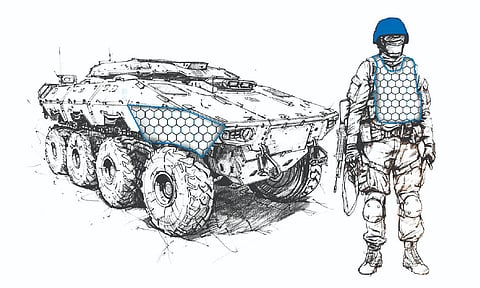

CHENNAI: Carborundum Universal Limited (CUMI) — a cutting-edge specialist in the manufacturing and development of abrasives, ceramics, refractories, aluminium oxide grains, machine tools, polymers, adhesives and electro minerals in India, is on a war-footing to enhance its offerings in the defence and space sectors.
In a recent interaction with DTNext, Subbu Venkatachalam, Head, Marketing, CUMI, spoke about the favourable manner in which the three-year-old defence business has panned out. The diversified Murugappa group company has achieved considerable success in its forays involving material science, which has been a progressive development from abrasives. “The largest business we deal with is abrasives — the raw material, which is our real bread and butter,” he says. Moving into material sciences led the company to branch out into areas like defence and aerospace, where it is now building its base.
CUMI’s stock in trade involves conventional technical ceramics like alumina, silicon carbide, zirconia and boron, which are developed and researched in two defence-centric plants at Hosur, Ranipet in TN, and three other units in Kerala. “Our initial products for defence were manufactured via abrasives, which had application in aerospace,” Venkatachalam points out. In fact, at the behest of DRDO (Defence Research and Development Organisation) CUMI’s diversification plan also took off. The foray into defence from industrial applications meant replacing the heavyweight steel with refractories, a much lighter ceramic material, that goes into industrial furnaces.
Ceramics have been used in the manufacturing of ‘light-weight’ helmets, bulletproof jackets for soldiers and in armoured vehicles. More recently, CUMI has also been working with different garment manufacturers on graphene, which Venkatachalam describes as a wonder material. CUMI has been processing the nano material at its Kerala plant, with encouraging test results. Incidentally, the Ministry of Electronics and Information Technology, launched the India Graphene Engineering and Innovation Centre (IGEIC) last year. Articulated as India’s push towards leadership in graphene technology commercialisation, IGEIC has strategically located its R&D and manufacturing setups in Kerala.
Another marquee client is ISRO, which called on CUMI a decade ago, at their Ranipet plant. “They needed refractories for their rocket launch pads. Though not a high-volume business, it is national pride that led CUMI to intensify its R&D.”
Venkatachalam also speaks about the increasing transparency among defence stakeholders. “Over the last two years’, access to the government and also communication between OEMs, the government, DRDO labs, has been really strong,” he says, and adds that designing in a DRDO lab has made it viable to work on technologies, like developing armour material for vehicles with zirconia.
In fact, the technology transfer from DRDO has enabled CUMI to manufacture such armour. Similarly, highlighting the importance of working with materials like silicon carbide, he says it is not only lighter but highly impact-resistant too. Earlier, the impact of a bullet from an AK47 would render a bulletproof jacket useless. But, CUMI has made it possible to reuse such vests by patching or replacing the damaged portion.
CUMI has already invested close to Rs 50 crore on its Hosur facility, where it has a dedicated wing for making the armour. But the focus is more on R&D. “We have started working with government institutions and educational institutions to improve the ceramic material. We’ve just signed up an agreement with IIT-Delhi where we will work on light-weighting the ceramics,” he says, and adds the formal announcement of the recently-concluded tripartite agreement with the institution is on the cards.
AT A GLANCE
CUMI produces raw material (grains) to engineer high-performance ceramic components designed to defend by ensuring maximum ballistic protection against evolving threats
Ceramic ballistic protection range engineered from silicon carbide, boron carbide, alumina, zirconia
Solutions are lightweight, ergonomic, customisable for use in bulletproof vests
Rubberised ceramic panels designed to provide structure, dimensional stability to ceramic tiles
Lightweight yet resilient solutions for personal and vehicle armour provide a much-needed alternative to conventional bulky, heavy metal armour
Materials conform to National Institute of Justice ‘Level IV’ and STANAG Level 3 global standards